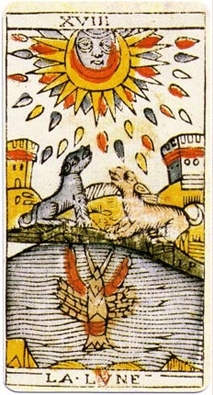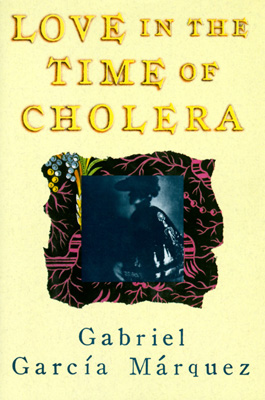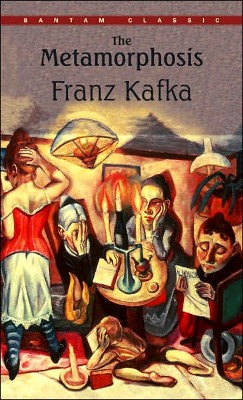
–Leila Vennewitz’s 1973 translation of Heinrich Böll’s Gruppenbild mit Dame (1971)
August bread’s current embodiment, with the well’s portrait of Trakl's reddish fish opponent-processed
As infinitive, capitalized, and rising in the green pond (1913)—For eight years abroad, Clarice Lispector’s
Occasional photograph in fur was misassembled glamor for contact comfort, against the inhuman variabilities
Of central air—Now, with the foundation off, and the deck fanned, as Heinrich Böll’s Leni, the one with a flower on her breast—
That she was a thirty-year-old woman, and too often in the place of imminents who slam the door to no one,
Subtends one day less, after Breton’s Le verbe Être (1932), for which Ilse Kremer had written in a separated, otherwise rose
Tinged, condiment streaming, “to have” on a prewar mirror—From August 1815, Schubert’s Op. 3. No. 3, the phantom Heidenröslein
After Goethe’s violet; crushed by a unthinking girl, and set by Mozart (1785)—Predating the horse-drawn trams of the Cologne Stadtbahn, and Zola’s La Faute de l'abbé Mouret (1875), from sections unrolled for rationed tobacco—Serge, whose clerical work precludes faith, processes
Female parishioners through the marble likeness of Cybèle, for which Mantegna portrayed only the righteous Cornelius Scipio extending his right hand (1505); Albine, no different from the ones
Of Beuys’s Rose für direkte Demokratie (1972) ascends the optical infeasibility of a meniscus into thirteen petals of the rose, alone, with later grafted measures of mercy of the unchanged Clarice Lispector’s
Thirteen Names, which become The Hour of the Star (1977)—Had Boris stayed in the Soviet paradise below ground; riding out the occupation with variabilities
Of the groom’s unearthly horses calling into the room where a country doctor must lie down with the wounded; refrains, and whose fur catches in the spokes of his trap (1917); bearing the liabilities of false papers longer, not to die in an iron vein—Left with the son and Rebecca Horn’s Cornucopia, Séance for Two Breasts (1970),
Leni, with her pram, past the honey sandstone; seemingly hammered metal, portal of the North Rhine-Westphalia cathedral; known to her by its foundation stone laid on the Assumption (15 August 1248) and the Ursuline arrows imitated by unfused, thick-sheathed, and hollow young skeletons of the Goldene Kammer—Discerning only her own breast
By its diastole, though she knew the then-unborn Rosemarie Trockel’s non-reflective gold glazes of the Liquefaction of Mother in molten wiring of gypsum coral ceilings after the thousand-bomber raid (May 1942)—The diplomat, João Guimarães Rosa
Issued some of the few Brazilian travel visas (1938), at a lecture of her mentor, Claude Bernard, whom Zola read for the fixity of the internal environment is the condition for free life (1865), and by the doctor’s son, Edvard Munch, who economized in the perfectly turned model, Rosa Meissner, at Warnemünde, for the rubicund Femme en pleurs (1907-9)—Rahel engaged the doctor on a seldom day pass to Hamburg on the digestive variability
Of raw cow’s milk in Minas Gerais; those that were able, forgoing its benefits completely, for she studied the retinas concentrating yellow riboflavin, and those markedly deficient in varied species—Before her, a process
To visualize the gorse across the Channel; never having spent time on a wasted farm, the Sister who became a spring, in your clandestine reading, think of her—For the head of the people is one
From Grande Sertão: Veredas (1963); resh, the stem’s head of a sunflower—Second Genesis postpones as a snake, a thorn, at last enclosing a river went out of Eden, Pison, before the appearance of woman and her auditors, who cannot live it, the Albigensian, Clarice Lispector—
That which had only been seen by terrestrial telescopes, like the cockroach’s collaged blind fertility of its gaze, originating from an earlier stopover at the perfection of the planet Mars (1960); Marsilio Ficino, whose ascendant Saturn contacted all the roundels of his chart, found the Red planet’s orbital velocity disconcerting the cosmic scale—Clarice Lispector,
G.H., reenters the room, with its sweeping intentions at the July 14, 1964 Mariner-4 flyby of Mars—And it became a now, fifty years, exactly, the ninth wave of plasmaspheric wind to Pluto—The salt of life, on the page of a breast
Of a Lincolnshire marsh—Stefan Zweig’s second Master Builders of the Spirit would say of Hölderlin, who repudiates contact with everyday life (1930)—A pictured harp seal pup cluster of thirty cows, by one
Sight-mounted eyepiece and tripod for birds (2015)—Johannes Bobrowski, after serving Soviet corrective labor, reads for the children’s imprint Altberliner Verlag (1950), with their import lasting from verse to verse: / childhood— / then I loved the oriole (1961)—Before the universal equivalent pronounced by Jacques Brel, Rosa
Rosam rosae (1962)—There then, celestial res derelicta renewing its usefulness in time, Proof that there's a purpose set / Before the secret working mind (18 July 1948) in view of the variability
Of admission of the sacrament, from Frau Gruyten’s Ossianic readings molting a single graven wreath or windrose of the Weimar 5 Pf. green, with missing valuations found by the householder, now Hoyser, of their apartment building that December, 1944—The process
Of living consists of errors—most of them essential (1967), assenting the Roman Renato Guttuso on the process,
A crucifixion looking like a still-life (1942)—Where Van Gogh's sunflowers condense clusters of spent matches into range eyes (1971), and the Palermo market stalls; much like those of Campo de São Cristóvão Clarice Lispector
With the convent garden hot spring—Sveglia, Califfa, out of the Martian rise of the afternoon; she gave the bouquet of roses to Carlotta, saving for herself Report on the Thing; as it happened, by a tear by a Roman youth with a fish hook, with its divisions of eighteen, thirteen, and five green leaves surrounding the rose,
Who is Armando, her husband, coming through the door—Irene Corsini reopens the insolvent wafer factory upon which the citizens of Oltretorrente depend (1970), as Liana Hölthohne, who employed Leni until 1970, spoke of her neighbor in the Alastian village, Ernst Stadler, who wrote Roses In the garden bloom for the second time, before dying at Ypres (October 1914)—The greenhouse keeper caught vestiges of rhomboids, triangles in Leni’s forms from their war trimming days, by which she penetrated the process
Nativity, W.S. Merwin and Olga Carlisle (1968) together translating Essenin’s light sinking in the red hills, and then someone assembles a bridal wreath, leavened with musk written eighteen centuries ago, for the variabilities
Rising over reading an ivy-covered oak tree, thence through an elderberry bush—Breast level to the horizon for the discipline upturning Joseph Beuys’s multiples, using Martian iron, he called waste, Staeck edition, Magnetische Postkarte, Heidelberg (1975)—The young floribunda rose





26 comments:
https://drive.google.com/file/d/0B3DfyJRIT4jyZVdzQUZPeHJYeVU/view?usp=sharing
https://drive.google.com/file/d/0B3DfyJRIT4jyT1VYdDhRTlRZcDQ/view
https://www.youtube.com/watch?v=akKpEgoMeNY
http://www.theguardian.com/books/2009/mar/06/heinrich-boll-archive-cologne
Hilma af Klint.
https://img.posterlounge.co.uk/images/wbig/poster-au-eros-wu-1513116.jpg
Exercise 61 will go here.
http://en.unifrance.org/movie/40211/le-fils-de-joseph
Once again, I misnumbered.
https://onedrive.live.com/?cid=f55f42b98d0538c0&id=F55F42B98D0538C0%211400&v=3&ithint=photo,jpg&authkey=!AIGUm7DUmdTNkDA
http://www.nytimes.com/2015/11/30/books/review-in-paolo-giordanos-like-family-the-nanny-departs-and-cracks-emerge.html?_r=0
https://schabrieres.wordpress.com/2016/07/27/kenneth-rexroth-tu-te-demandes-1978/
"The answer was in their stems. Like those of other plants, the stems of young sunflowers grow more at night — but only on their west side, which is what allows their heads to bend eastward. During the day, the stems’ east side grows, and they bend west with the sun."
http://www.nytimes.com/2016/08/05/science/how-sunflowers-follow-the-sun-day-after-day.html?smid=fb-nytscience&smtyp=cur&_r=0
https://books.google.com/books?id=-TggtZ7Qs_8C&lpg=PA24&dq=The%20Hour%20of%20the%20Star%20occasionally%20on%20payday%20she%20bought%20a%20rose&pg=PA24#v=onepage&q=The%20Hour%20of%20the%20Star%20occasionally%20on%20payday%20she%20bought%20a%20rose&f=false
Thank you, for reminding me. I will put Exercise 83 here.
https://1drv.ms/i/s!AsA4BY25Ql_1jh1oF3ehRYo54Z5M
https://books.google.com/books?id=f1jCAgAAQBAJ&lpg=PT126&dq=Chrysocolla&pg=PT126#v=onepage&q=Chrysocolla&f=false
χρυσός κολλα (chrysos kolla), "gold glue"
https://www.xrite.com/hue-test
My Results
Score: 0
Gender Female
Select Age Range 30 - 39
Best Score for your Gender 0
Worst Score for your Gender 8888
About your score: A lower score is better, with ZERO being a perfect score. The circle graph displays the regions of the color spectrum where your hue discrimination is low.
Thank you, for reminding me. One of my favorite electives was ornithology, particularly the sighting of movement and color from a sound in the trees. Likewise, for butterflies and moths, while they are silent.
https://books.google.com/books?id=zM0tG5ApO0UC&ppis=_c&lpg=PA188&dq=avian%20pecten%20%22avian%20retina%20has%20no%20embedded%20blood%20vessels%22&pg=PA188#v=onepage&q=avian%20pecten%20%22avian%20retina%20has%20no%20embedded%20blood%20vessels%22&f=false
As an aside, I especially like the bee-eye inflected waterlilies.
https://scopeblog.stanford.edu/2012/04/22/image-of-the-week-monets-lilies-in-uv-light/
Exercise 87 will go here.
https://books.google.com/books?id=LZ5bDwAAQBAJ&ppis=_c&lpg=PA192&dq=%22In%20the%20passenger's%20seat%20rode%20twenty-six-year-old%20Katharina%20Esser.%22&pg=PA192#v=onepage&q=%22In%20the%20passenger's%20seat%20rode%20twenty-six-year-old%20Katharina%20Esser.%22&f=false
https://books.google.com/books?id=iLnBSEz9H5UC&ppis=_c&lpg=PP1&dq=The%20Lost%20Honor%20of%20Katharina%20Blum%20%22four%22&pg=PA79#v=onepage&q=The%20Lost%20Honor%20of%20Katharina%20Blum%20%22four%22&f=false
https://www.criterion.com/films/726-the-lost-honor-of-katharina-blum
https://www.youtube.com/watch?v=77p76fi4uA8
https://www.youtube.com/watch?v=in3-Hug6g3A
This is the next text...with associations of the duel at the Dom and the killing on film of Kathi Esser 6 March 1945.
Wolfgang Koeppen's trilogy beginning with Pigeons on the Grass?
https://www.ndbooks.com/book/pigeons-on-the-grass/#/
"Retinas are image processors. Inputs arriving at the photoreceptors are compressed by successive convergences, filtered spatially and temporally, and encoded for transmission to the brain by retinal ganglion cells. Much of the shaping of ganglion cell responses is done by amacrine cells, which make up ∼40% of all neurons of the inner nuclear layer. Amacrine cells are variegated in shape and in biochemistry (Wässle and Boycott 1991) and have equally diverse functions (35, 61). This is shown by the branching of individual amacrine cells within restricted levels of the inner plexiform layer, which means that the different amacrine cells contact different types of bipolar and ganglion cells. If the amacrine cells have different kinds of synaptic partners and different neurotransmitters as well, it is clear that they carry out different functions in shaping the retina's output (MacNeil, 1998)."
https://www.sciencedirect.com/science/article/pii/S089662730080478X
"The more general answer, though, is that there are lots of types of amacrine cell because there are lots of types of ganglion cell. In round numbers, if there were 15 different functional types of ganglion cell and 30 types of amacrine cell, this would be a ratio of 2 amacrine cells per ganglion cell type—not a surprising number for a dedicated microcircuit of the central nervous system (Masland
https://www.ncbi.nlm.nih.gov/pmc/articles/PMC3652807/
https://www.google.com/books/edition/We_Know_It_When_We_See_It/C0ShDwAAQBAJ?hl=en&gbpv=1&dq=We+Know+It+When+We+See+It+Masland+%22Why+in+the+world+does+the+retina+need+twenty-nine+types+of+amacrine+cells%3F%22&pg=PT63&printsec=frontcover
[...] "Our conclusion, which we published in a major journal (with only a little difficulty), was that there are twenty-nine different types of amacrine cell in the retina, each doing a separate job in the process of the visual image.
Why is that statement worthy of notice? It turns out that it was a pretty big clue to how the retina works. Why in the world does the retina need twenty-nine types of amacrine cells? The answer must be that there is much more processing in the retina than we had thought. Amacrine cells make a major output to the retinal ganglion cells, which are the last step before the retina sends its messages to the brain (Maslund, 2020)."
https://books.google.com/books?id=aXOwCgAAQBAJ&pg=PA44&dq=When+external+objects+are+projected+onto+the+retina,+its+ganglion+cells+generate+spike+...+where+image-like+representations+are+first+processed+unconsciously&hl=en&sa=X&ved=2ahUKEwibnc-Bhe_rAhXIlHIEHeBkCzUQ6AEwAHoECAAQAQ#v=onepage&q=When%20external%20objects%20are%20projected%20onto%20the%20retina%2C%20its%20ganglion%20cells%20generate%20spike%20...%20where%20image-like%20representations%20are%20first%20processed%20unconsciously&f=false
https://bilvavi.net/english/torah-way-enlightenment-004-seeing-ayin-nothingness-nullifying-sense-sight
https://books.google.com/books?id=tdyHF0ewUVIC&pg=PT72&dq=aleph-yud-nun&hl=en&newbks=1&newbks_redir=0&source=gb_mobile_search&sa=X&ved=2ahUKEwi-nZTBiPCGAxW9EmIAHea7CTQ4ChDoAXoECAoQAw#v=onepage&q=aleph-yud-nun&f=false
https://www.apollo-magazine.com/jan-svankmaker-films-surreal-czech-puppets/
https://books.google.com/books?id=WhcqEAAAQBAJ&pg=PP32&dq=The+World+According+to+Color+Fox+%22Pierre+Soulages%22+%22snow%22&hl=en&newbks=1&newbks_redir=0&source=gb_mobile_search&sa=X&ved=2ahUKEwiArtau_rmIAxVmGVkFHRbFFyQQ6AF6BAgLEAM#v=onepage&q=The%20World%20According%20to%20Color%20Fox%20%22Pierre%20Soulages%22%20%22snow%22&f=false
I know, I was very pleased to find Soulages and snow, which is relevant to the current Card. I will get to it.
https://youtu.be/L-gGpWpra-g?si=v8KISXPYu-mxOenV
I paused on the current Card because there wasn't an opening. I won't stop trying. Thank you for reminding me about the eye of nothingness and potentiality.
https://cityofimmortals.com/interview-with-benoit-gallot-conservator-pere-lachaise-cemetery/
Post a Comment